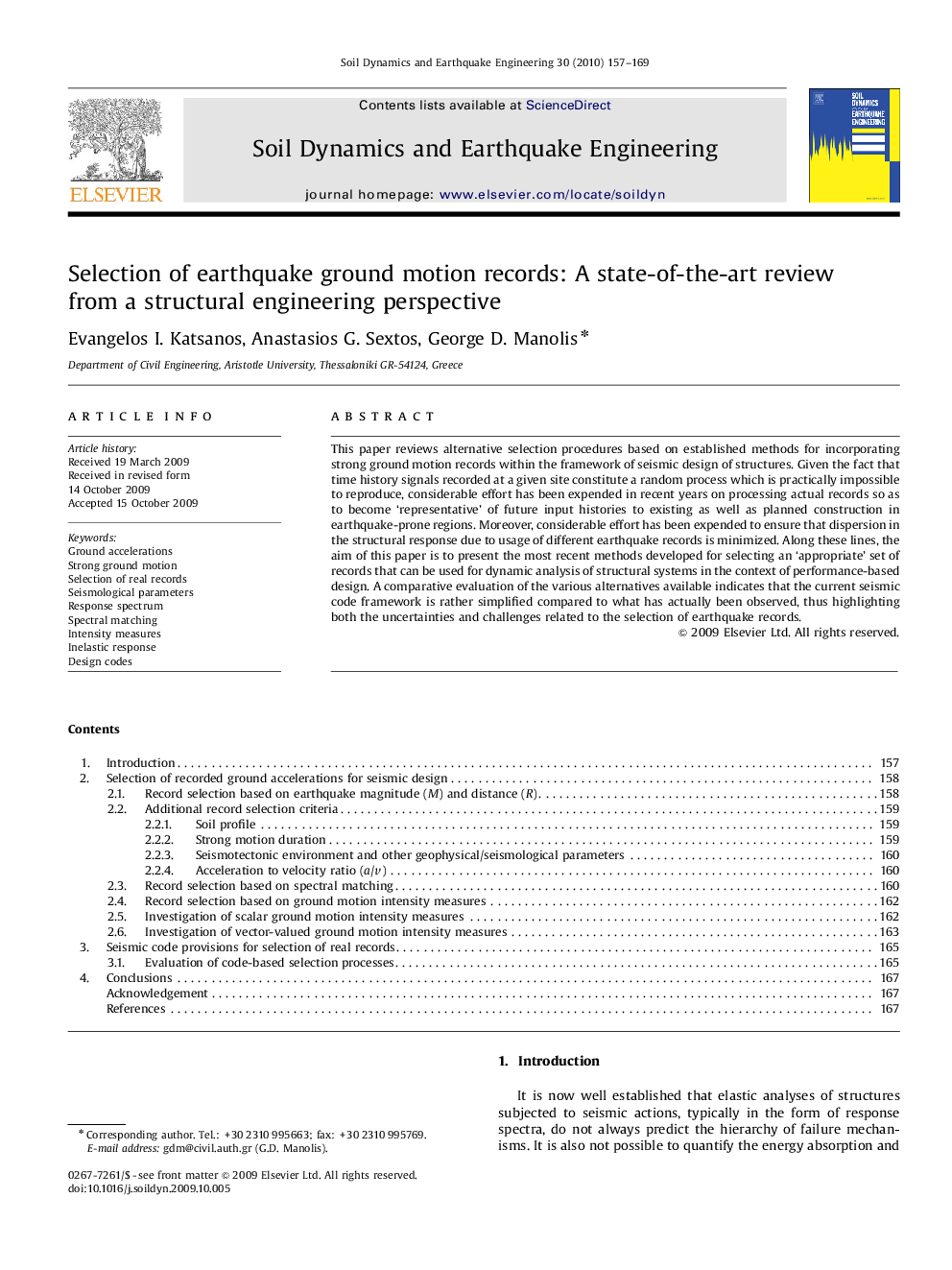| Article ID | Journal | Published Year | Pages | File Type |
|---|---|---|---|---|
| 304732 | Soil Dynamics and Earthquake Engineering | 2010 | 13 Pages |
This paper reviews alternative selection procedures based on established methods for incorporating strong ground motion records within the framework of seismic design of structures. Given the fact that time history signals recorded at a given site constitute a random process which is practically impossible to reproduce, considerable effort has been expended in recent years on processing actual records so as to become ‘representative’ of future input histories to existing as well as planned construction in earthquake-prone regions. Moreover, considerable effort has been expended to ensure that dispersion in the structural response due to usage of different earthquake records is minimized. Along these lines, the aim of this paper is to present the most recent methods developed for selecting an ‘appropriate’ set of records that can be used for dynamic analysis of structural systems in the context of performance-based design. A comparative evaluation of the various alternatives available indicates that the current seismic code framework is rather simplified compared to what has actually been observed, thus highlighting both the uncertainties and challenges related to the selection of earthquake records.
